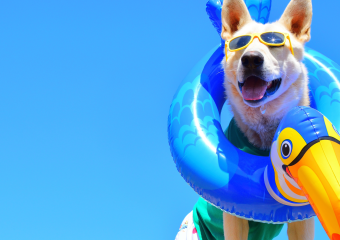Hot Pavement Safety: Shielding Your Dog’s Paws from Burns
As the summer months approach, it’s important for pet owners to be aware of the dangers that hot pavement can pose to their furry friends. While many people may not realize it, asphalt and concrete can reach scorching temperatures during the summer, causing serious burns and injuries to a dog’s sensitive paw pads. Understanding the risks associated with hot pavement is crucial in order to protect your pet from harm.
Dogs’ paw pads are designed to withstand a variety of surfaces, but they are not immune to the extreme heat that can be generated by pavement in the summer. When a dog walks on hot pavement, their paw pads can quickly become burned and blistered, leading to pain and discomfort. In severe cases, these burns can even become infected, requiring medical attention. It’s important for pet owners to be vigilant and take steps to protect their dogs from these potential dangers.
One of the most obvious signs that a dog has sustained paw burns from hot pavement is limping or favoring one paw over the other. Other signs may include redness, swelling, or blisters on the paw pads. If you suspect that your dog has sustained a burn, it’s important to seek veterinary care immediately to prevent further complications. In some cases, dogs may also lick or chew at their paws in an attempt to alleviate the pain, which can further exacerbate the injury.
To protect your dog’s paws from burns and injuries, there are several steps you can take. One of the most effective ways to prevent paw burns is to avoid walking your dog on hot pavement during the hottest parts of the day. Instead, opt for early morning or late evening walks when the pavement is cooler. You can also test the temperature of the pavement by placing the back of your hand on it for a few seconds. If it’s too hot for your hand, it’s too hot for your dog’s paws.
Another option is to invest in protective booties for your dog to wear during walks on hot pavement. These booties can provide a barrier between your dog’s paw pads and the hot surface, reducing the risk of burns. Additionally, you can apply a paw balm or wax to your dog’s paw pads to help protect them from the heat. Keeping your dog’s nails trimmed can also help prevent injuries from hot pavement, as long nails can make it more difficult for them to walk comfortably.
If you’re looking for alternative walking surfaces for hot weather, consider walking your dog on grass, dirt, or sand instead of pavement. These surfaces tend to be cooler and gentler on your dog’s paw pads, reducing the risk of burns and injuries. You can also take your dog to a nearby park or hiking trail where they can walk on natural surfaces that are less likely to retain heat.
In conclusion, hot pavement can pose a serious threat to your dog’s paw pads during the summer months. By understanding the dangers of hot pavement, recognizing the signs of paw burns and injuries, and taking steps to protect your dog’s paws, you can help keep your furry friend safe and comfortable during walks. Remember to be proactive in preventing paw burns by avoiding hot pavement, using protective booties or paw balm, and seeking alternative walking surfaces when necessary. Your dog will thank you for it!







